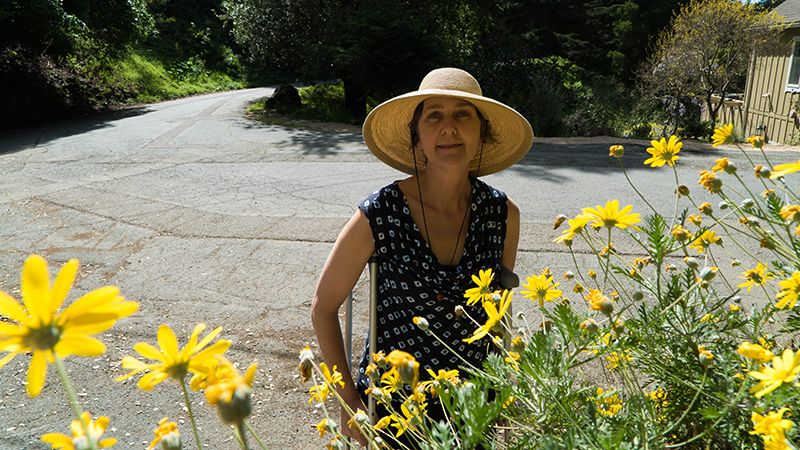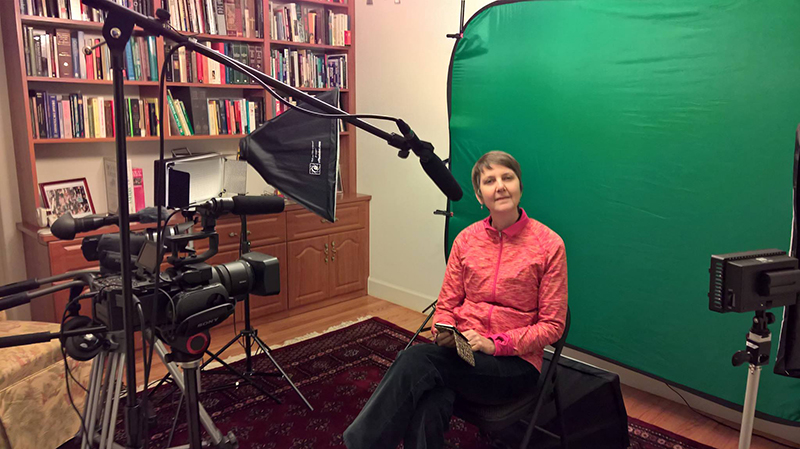Projects
Update
April 16, 2016

You might think that Julia and I have been sitting around just waiting for her knee to mend, well you'd be wrong. While convalescing, film director Julia Buss has also photographed her last interviewee, transcribed all of the interviews, and completed the script for our latest documentary film The Root Cause. We'll record her narration soon and begin to cut the film together. The film should be complete later this year.
Julia has also used her downtime to help me finish my new book The Truth About Truth. It's been a year in the writing and creation of this non-fiction short read, and I am extremely happy to have given birth to it and thrust it upon the world. It should be available very soon for your reading pleasure.
By the way, Julia has also been recovering nicely from her horrible injury and will soon be back to full mobility.
My new book: The Truth About Truth: chains of evidence

The human condition is fraught with ambiguity and plagued by uncertainty. We can't always know ourselves and what we might do in any given circumstance, even though we might like to think otherwise. Therefore, we highly value the concept of truth as it is reassuring to feel that there is some kind of certainty in our world. If only we can find, define, and hold onto this elusive truth then we can soothe our psyches with the balm of truth, and thereby delude ourselves with feelings of certainty. It is not easy to think that truth may be an outdated concept, or indeed a concept with very little utility, except perhaps in the realm of fairy tales and fantasy.
In our lives we can only see shadows on the wall of the human cave. We need to keep in mind these shadows are only built from our personal experiences, our culture, and our perception.
Defining truth is like trying to hit a moving target. If some idea becomes a so-called truth at some point, can it be an eternal truth? Are some truths immutable, or is this possibility mere wishful thinking? Is there a moment in time when circumstances allow a truth to be possible or to really be true? Then if that moment in time passes does the particular truth lose its relevance or use?
Often traditional truths are the most powerful in our cultures, and are continually passed down through the generations. These types of truth gain immense hold over our lives and appear to gain extra power over us merely from their ancient lineage, regardless of their sense or nonsense.
Is it possible to have different versions of truth? Is a truth necessarily subjective and relative to situation? How much does truth matter to us, and in what ways does it control our decisions, even our lives? Does the concept of truth promote the accumulation of knowledge or hinder it?
This is a smart and insightful book that asks many such questions. It examines “truth†and questions assumptions about the idea of truth. It puts “truth†under close scrutiny and comes up with a useful tool for examining one's own, and society's assumed truths.
Our new film: The Root Cause
Log line

Human activity on the planet is a geological force, changing the climate and the oceans, reshaping the landscape, causing pollution, and driving extinctions of other species. As a result, human civilization as we know it is facing its own demise. Can humans change the way we interact with the environment and change our future to avert disaster, or are we bound by our innate nature to continue as a destructive geological force?
Story summary
The environmental and existential issue covered in the story is that humans are causing a new geological epoch named the Anthropocene, and this activity may be devastating to us and many other species alive today. Yet we are not the first species to change the course of evolution and drive planetary-scale change. Billions of years ago cyanobacteria evolved to photosynthesize, produce oxygen, and send the planet on the evolutionary trajectory that led to life on Earth as we know it today. Cyanobacteria were not aware of their effect on Earth, but we humans can measure and see what we are doing. How are we reacting to the changes we are causing? Are we capable of rationally figuring out a way forward that will protect life and civilization as we know it? Are we in control or are we similar to cyanobacteria?
It is important to take a look at what defines the Anthropocene. The film outlines the various areas in which human activity is influencing planetary-scale change. Probably, every person has heard of climate change, regardless of whether they deny the science or accept it. But there is much more happening in the Anthropocene epoch. The film narrative explores the definition of Anthropocene. This environmental sustainability film is narrated by the director. Narration is interspersed with interviews from six experts. There are interviews with academic researchers and experts on the various effects of the Anthropocene to provide an overview of all the impacts we humans are having on the planet.
The scale of human activity is enormous due to industrial processes and due to issues of population and consumption. There are unprecedented numbers of humans alive today. And many of us mindlessly consume with complete disregard to the environmental cost of our behaviors. The film takes a look at demographics and projections for future population. As our numbers increase, it is only morally right that every human should expect adequate food, water, safety, education, and to have a so-called developed world lifestyle. Yet what does this mean for the future demands on the environment? No society has yet developed without fossil fuels; can future societies be different? The main issue impacting the survival of the human species is how the distribution of consumers evolves. If the Earth was populated by 7 billion high-level consumers today it is likely that the effects of human activity on the planet's life systems would be much, much worse.
The film then examines our ability to respond to environmental threat and interviews an expert researcher in this area. By taking some time to examine our typical psychological responses the film asks if we are able to fully grasp the extent of the problem that we face? And if we are, can we respond in time to protect and conserve our resources?
The film contends that one major problem to solving the Anthropocene is continuing with business as usual. If we are unable to take into account the true cost from cradle to grave of the production of goods and services, will we be able to have equitable and sustainable lifestyles for all people on Earth? Business as usual relies upon ever-growing numbers of consumers of products and services. The numbers of consumers are increasing worldwide. The film takes a look at consumption and production under the business as usual rubric and poses possible alternatives. A lawyer who is working to help people develop co-operatives and ways to promote a sharing economy rather than an exploitative system shares ideas for alternatives. Any solutions to the problems of the Anthropocene need to take a look at our business as usual practices.
The ending does not provide a clear answer, rather aims to stimulate the audience to take a look at themselves, their behaviors, and to think about ways that in their own lives they could participate in solutions. Are we humans different from bacteria, do we have the ability to think our way out of the situation that we have caused? If we believe that we are different from bacteria, that we can act and change our behaviors, then now is the time to prove it. We need to collectively participate in solutions, and to recognize the magnitude of the Anthropocene Epoch of our own making.
The interviewees in this film are academics (from Stanford University and UC Berkeley) and environmental and social justice activists in the San Francisco Bay Area. The film interviews 6 individuals. To-date, five interviews are completed and the remaining interviewee is scheduled to participate.
Artistic Approach
The vision for this film is to create a cinematic essay with stunning natural footage and still images of nature throughout, while the narrative will describe the Anthropocene and human response to the threat. The film will juxtapose the serious and menacing reality of the Anthropocene with the beautiful reality of nature. We intend to show only images of nature. The images will all be gorgeous; we do not want to show any smoke stacks, or industrial images, or cityscapes. The interviewees are filmed in front of a green screen so that scenes of natural beauty can be inserted behind them. It will appear to the audience that each person has been interviewed in a natural beauty spot. The narrator will not appear in the film in person, but the narration will provide bridges between the threads of expert testimony.
The filmmakers have footage and images of nature from around the world (animals, flowers, plants, and landscapes) that will be used in collage interspersed throughout the film. The intent is that the look of the film will be a subconscious reminder of the things that we have the potential to destroy or lose due to the Anthropocene. Apart from the interviewees, the film will not include images of humans. Infographics (again only using images from nature, including digitally created oil paintings) will be used to explicate certain information where it will be helpful.